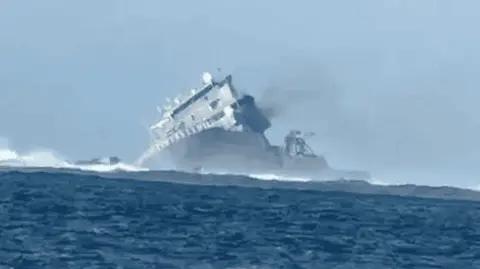The first report from an inquiry into the incident was released on Friday. It found that crew members had believed there were problems with the ship's thruster when they could not change the vessel's direction.
But none of the crew had bothered to check whether the ship was still on autopilot, before it crashed.
Navy chief Garin Golding told reporters that “the direct cause of the grounding has been determined as a series of human errors".
"Muscle memory from the person in control should have leaned over to that panel and checked whether the screen said autopilot or not."
The inquiry is expected to finish next year. Golding said that following the inquiry's completion, officials would start a separate disciplinary process involving three unnamed crew members.
"I want to reassure the public of New Zealand that we will learn from this situation and that it is on me, as the Chief of Navy, to earn back your trust," he said.
He added that divers were monitoring the “persistent slow leak”.
While equipment is set to be transported to Samoa this week to remove fuel and other pollutants from the ship, New Zealand authorities have not announced plans to remove the ship.
The ship was conducting a survey of waters off the island of Upolu when it struck a reef and caught fire during a bout of rough and windy weather. It sank shortly after that.
In the following days, social media users started trolling the ship’s female captain, claiming that her gender was to blame.
These commenters were denounced at the time by New Zealand’s defence minister as “armchair admirals”.
